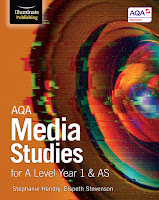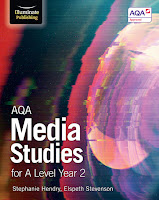This is a another great opportunity to develop our filming and editing skills prior to starting our coursework later in the year.
Editing video: Continuity task
Your Editing video involves filming and editing a character opening a door, crossing a room and sitting down in a chair opposite another character, with whom she/he then exchanges a couple of lines of dialogue.
This task should demonstrate match on action, shot/reverse shot and the 180-degree rule.
Key skills
The following clips and links should help you with the key skills you need to demonstrate in your preliminary exercise.
Match on action
Match on action (or cutting on action) is an editing technique for continuity editing in which one shot cuts to another shot showing the same action of the subject in the first shot.
This creates the impression of continuity - the action creates a 'visual bridge' which is easy for the audience to follow.
Note: if video does not embed, click on this link to open in YouTube.
Shot/reverse shot
Shot/reverse shot uses over-the-shoulder shots to show a conversation between two characters. Look at this example from the Hunger Games movie - specifically between 0.50 and 1.30.
Note: if video does not embed, click on this link to open in YouTube.
With shot/reverse shot, you need to observe the 180 degree rule.
180 degree rule
The 180-degree rule of shooting and editing keeps the camera on one side of the action. This keeps characters grounded compositionally on a particular side of the screen or frame, and keeps them looking at one another when only one character is seen onscreen at a time.
It is referred to as a rule because the camera, when shooting two actors, must not cross over the axis of action; if it does, it risks giving the impression that the actors' positions in the scene have been reversed. [source: Columbia Film Language Glossary]
Note: if video does not embed, click on this link to open in YouTube.
Task list: planning
1) Decide who you will work with. Remember, the filming can be in pairs/groups but you MUST edit individually.
2) Discuss what your preliminary exercise will involve – location, sequence of events, who will act etc.
3) Write a short script for the preliminary exercise. Remember, scripts outline movement and shots as well as dialogue. The BBC Writer's Room is a brilliant resource for tips and examples of TV scriptwriting. Here's a genuine TV script example from Luther to check you are formatting your script correctly.
4) Write a shot list of every possible shot (and a few extra) you will need for this preliminary exercise. An example shot list is here.
5) Draw a complete storyboard for the sequence you plan to shoot - every shot should be in there. Storyboard sheets are available on the top of the filing cabinet in the corner of DF07.
6) Upload your completed planning to your blog then book out a camera and start shooting and editing your film.
Deadline: Wednesday 12 December
Deadline: Wednesday 12 December




